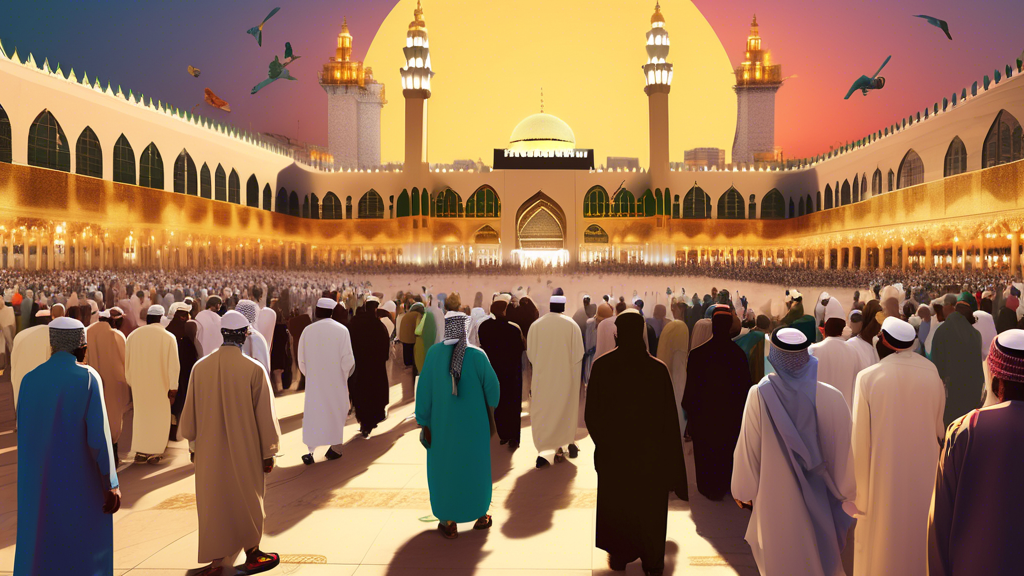Introduction to Umrah
Umrah, often referred to as the ‘lesser pilgrimage’ when compared to Hajj, is a significant Islamic pilgrimage to Mecca that can be undertaken at any time of the year, excluding the Hajj period. This spiritual journey holds immense importance in Islam and provides the faithful with an opportunity to cleanse sins, fulfill religious obligations, and renew their faith. Spanning approximately seven days, Umrah consists of several rituals that are both spiritually enriching and physically engaging.
Preparation for Umrah
1. Travel Documents
Before planning your Umrah in 2024-2025, ensure that you have a valid passport with at least six months remaining until expiration post your travel dates. Most countries require a visa for entry into Saudi Arabia for Umrah, which has been simplified with the introduction of e-visa services by Saudi authorities. Additionally, vaccination certificates, particularly for meningitis, are mandatory for visa application.
2. Budget Planning
Budgeting is crucial for a hassle-free pilgrimage. Costs can vary widely depending on the choice of package, accommodation, travel time, and additional tours or visits you plan around Mecca and Medina. Research different Umrah packages and compare what they offer concerning accommodation, transport, and additional services. Remember to allocate funds for meals, transportation within Saudi Arabia, and shopping for religious artifacts and gifts.
3. Physical and Spiritual Preparedness
Umrah involves a considerable amount of walking and physical activity under potentially extreme heat conditions. It is advisable to engage in regular physical exercises weeks before your journey. Spiritually, you should prepare by learning the rituals of Umrah, memorizing essential prayers, and understanding the religious significance of each step of the pilgrimage.
The Rituals of Umrah
1. Ihram
The pilgrimage begins with entering a state of Ihram – a state of spiritual purity and devotion. For men, Ihram clothing consists of two white seamless cloths, while women can wear any modest dress ensuring that only the face and hands are exposed. From the moment of donning the Ihram, pilgrims must abstain from cutting their hair, clipping their nails, and performing certain other actions.
2. Tawaf
Upon arrival in Mecca, pilgrims perform Tawaf, which is circling the Kaaba seven times in a counterclockwise direction. This acts as the focal point of the pilgrimage and is a spiritually charged ritual that demonstrates the unity of believers in the worship of the One God.
3. Sa’i
Following the Tawaf, pilgrims perform Sa’i, walking seven times between the hills of Safa and Marwah. This ritual commemorates Hagar’s desperate search for water for her son Ishmael and emphasizes patience, perseverance, and faith in Divine providence.
4. Halq or Taqsir
To finalize the Umrah, men may shave their heads (Halq), while women generally clip a small portion of their hair (Taqsir), symbolizing a renewal of state and purification of sins.
Accommodations and Transportation
Choosing the right accommodation in Mecca and possibly in Medina is crucial as it affects not just comfort but also ease of access to the Holy sites. Options range from luxury hotels to budget-friendly hostels. For transportation, the Saudi government provides extensive bus services that are cost-effective. Taxis and private cars are also available, but can be more expensive.
Health and Safety
The Saudi Arabian climate, particularly during the summer months, can be extremely harsh. It is critical to stay hydrated and protect oneself from the sun. Health services are available, but it’s advisable to carry a basic first aid kit and all necessary personal medication. Security at religious sites is very tight, ensuring the safety of pilgrims, but it’s wise to stay vigilant, especially in crowded areas.
Conclusion
Performing Umrah in 2024-2025 is a profound spiritual journey that requires thoughtful preparation and adherence to religious protocols. By planning thoroughly, you will ensure a fulfilling and enriching experience. It’s a path that not only deepens one’s faith but also bridges the gap between the material and the spiritual in one’s life.
